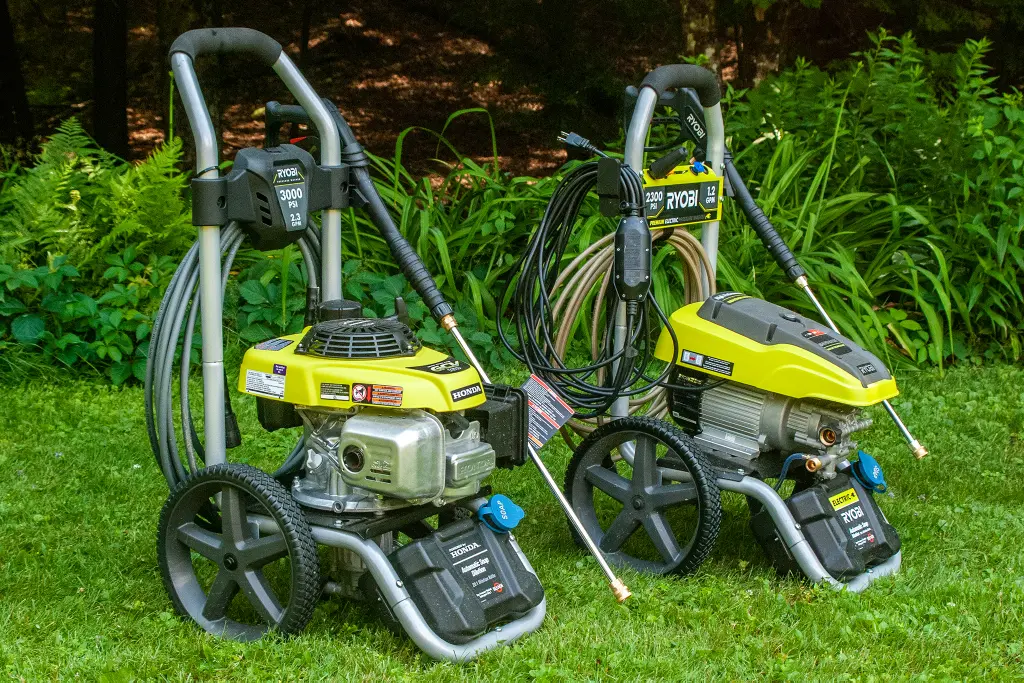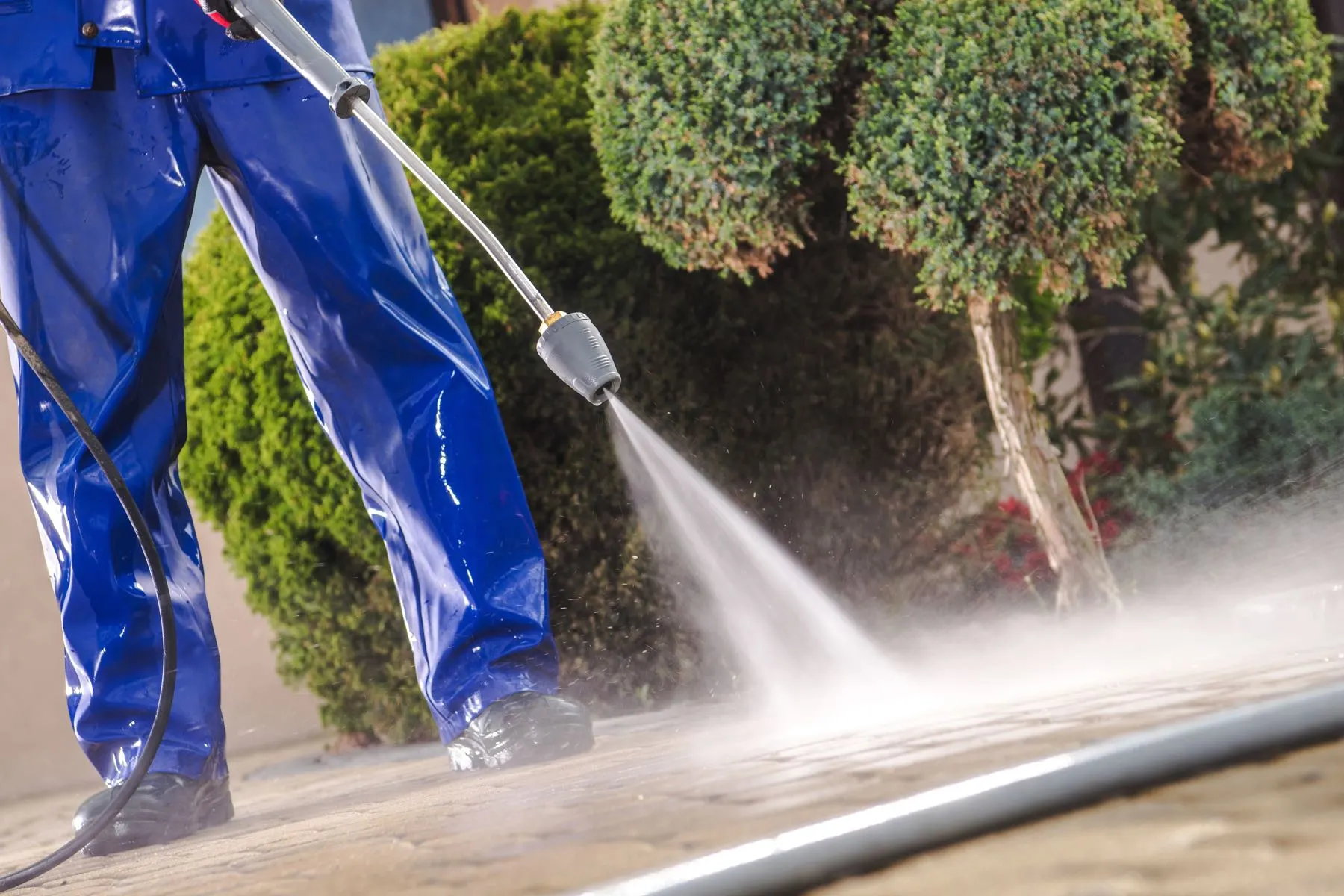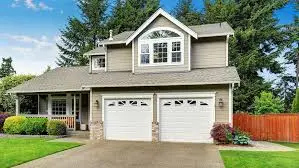How to Pressure Wash Your House the right way.
Looking to take on the project of pressure washing your property on your own? Not only will it boost your home's curb appeal, but it can also help protect your siding from the elements. In this guide, we'll walk you through everything you need to know to pressure wash your house like a pro.
If your interested in having your property cleaned by a professional, contact us today or read more about our House Cleaning Services.
Use these quick links to jump if you want to jump to a specific step.
1. Tools
Choosing the right pressure washer
Lets get started by choosing the right equipment for the job. There are two main types of pressure washers to consider: gas-powered and electric.
- Gas-powered: Offers a higher pressure level and is ideal for larger homes or tougher surfaces like brick or concrete. However, they can be louder and heavier.
- Electric: More affordable and quieter, suitable for smaller homes and lighter cleaning jobs like vinyl siding.
When choosing a pressure washer, consider the size of your house and the surfaces you'll be cleaning. For most homeowners, a machine with a pressure range between 1,500 and 3,000 PSI will suffice for most exterior surfaces【source: Bob Vila】.
Safety Gear
Don't underestimate the power of high-pressure waster. The right safety equipment is important for any job. We recommend you use at least:
- Goggles
- Gloves
- Long-pants
2. Preparation
Preparing the Area
Before you begin, it's important to protect the area around your house. Remove or use plastic sheets or tarps to cover any items you want to protect from water or damage.
Setting Up the Pressure Washer
We recommend you read the instructions for your pressure washer. Make sure you turn the water on before turning on the pressure washer. Attach the correct nozzle for the job — a wider nozzle is better for delicate surfaces, while a narrower one is more suitable for tough stains. Always double-check the pressure settings to ensure you don’t damage your home’s siding.
3. Pressure Washing Your House
Technique
When you’re ready to begin, start from the top of your house and work your way down. You don't want the dirty water running over your cleaned surface do you? This will also help prevent streaking as the water runs down the surface.
Make sure to keep a consistent distance from the house — 6 to 12 is a good rule of thumb to avoid damage.
Use a sweeping motion as you go and make sure not to spray directly at windows, doors, or other sensitive areas.
Different Surfaces
Depending on what it is your cleaning, you'll want to change your approach. For example:
Siding
- Wet the Siding: Rinse the surface with water to loosen dirt and debris.
- Apply Cleaning Solution: Use an eco-friendly detergent to spray on the siding first and let it to sit for a few minutes.
- Rinse Thoroughly: Use the pressure washer to rinse off the cleaning solution, making sure to remove all residue.
Concrete
- High-Pressure Setting: Use a higher pressure setting (up to 3,000 PSI) for concrete surfaces. However, be cautious around cracks to prevent further damage.
- Use the Right Technique: Hold the nozzle at an angle to avoid etching the surface, and move in steady straight lines for an even finish.
- Pro Tip:For oil stains, apply a degreaser before pressure washing. Let it sit for 10-15 minutes, then rinse with the pressure washer.
Wood surfaces
When cleaning wooden decks and patios, it's important to use lower pressure settings:
- Gentle Approach: Set your pressure washer to around 1,200 PSI and keep the nozzle at least 12 inches away from the surface.
- Pro tip: Use a wood-safe cleaning solution to help lift dirt and prevent mold growth after the cleaning.
4. Finishing up
Double check your work
After you've finished washing, take a few minutes to scan the area. Look for any spots you may have missed and touch up those areas. It’s better to do this while everything is still set up.
Putting things away
Make sure to turn the water off before disconnecting it from your pressure washer. Let anything drain that may need to and store the pressure washer in a dry area. If you used a cleaning solution, make sure to dispose or store of it according to the manufacturers instruction.
To wrap it up
Pressure washing your house yourself can give it a fresh, clean look while saving you money. By following these steps and using the right equipment, you’ll be able to maintain your home’s appearance and protect it from dirt, mold, and mildew. So grab your pressure washer and give it a try — you’ll be amazed at the difference a good wash can make.
If your interested in having your property cleaned by a professional, contact us today or read more about our House Cleaning Services.



